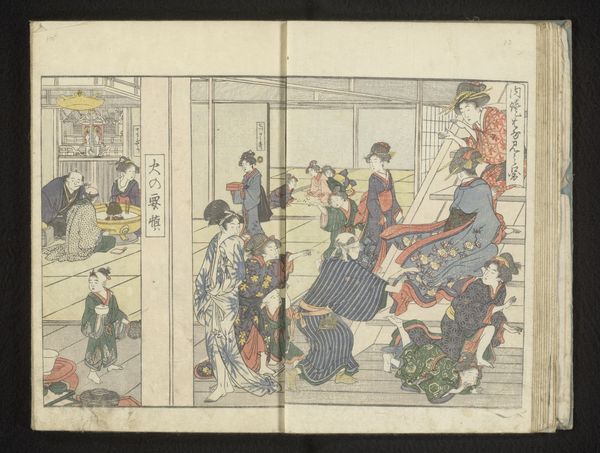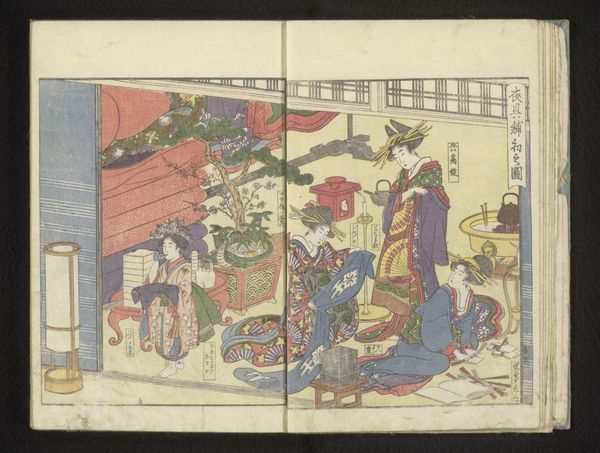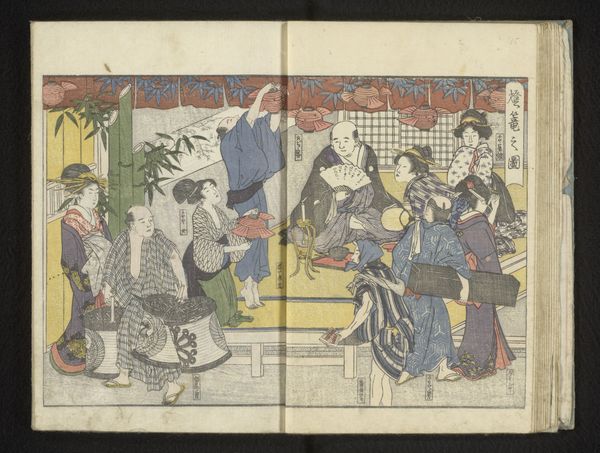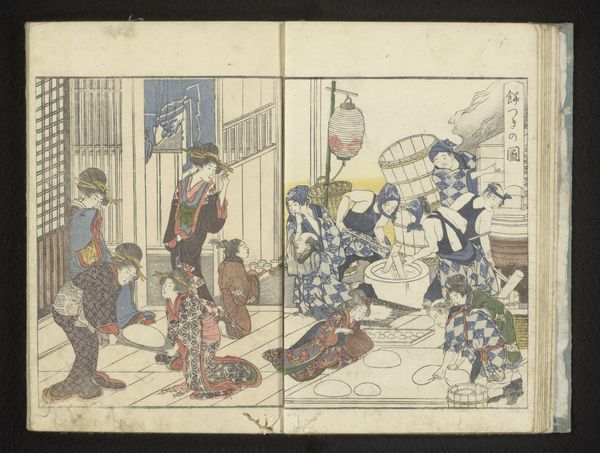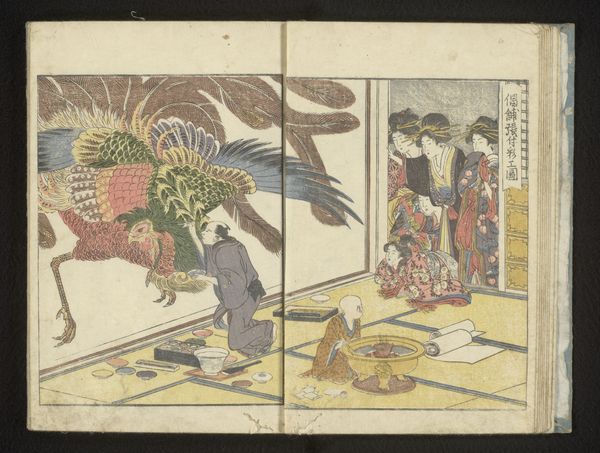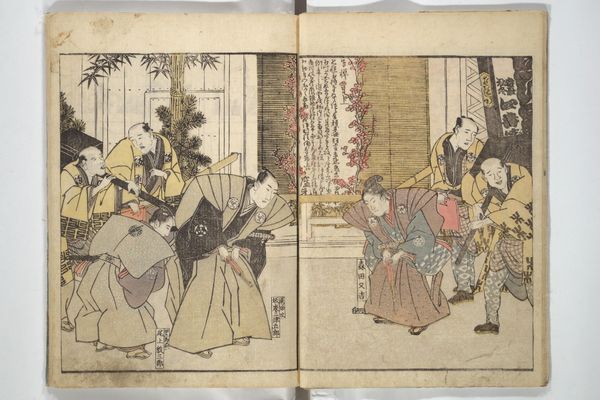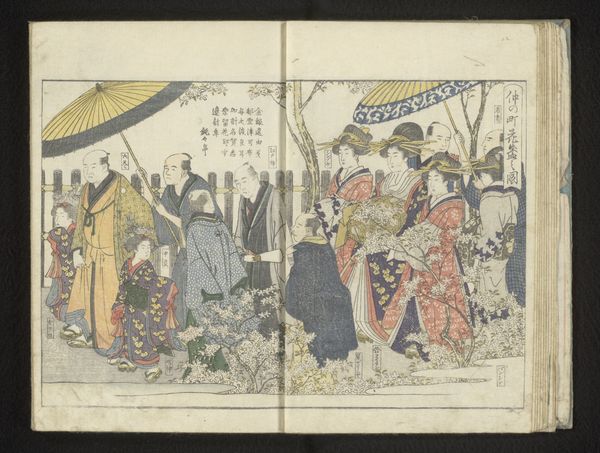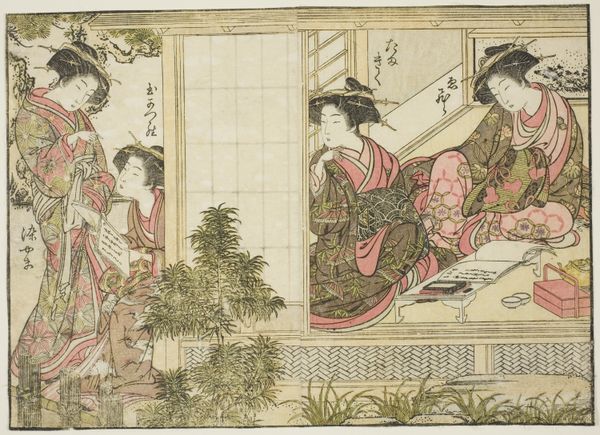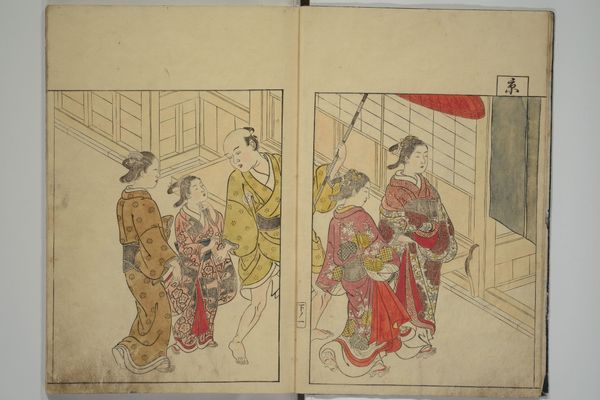
drawing, print, etching, woodblock-print, woodcut
#
portrait
#
drawing
# print
#
etching
#
asian-art
#
ukiyo-e
#
woodblock-print
#
woodcut
#
genre-painting
Dimensions: height 226 mm, width 158 mm
Copyright: Rijks Museum: Open Domain
Editor: So this is "Courtesans with two male guests", a woodblock print by Kitagawa Utamaro, created around 1804. I’m really drawn to the intimate scene it depicts, but also the sort of flat, almost decorative use of line and color. What are your initial thoughts? Curator: My immediate thought goes to the production of this ukiyo-e print. Consider the labor involved: the artist, certainly, but also the woodblock carvers, the printers, and the paper makers. It's a fascinating process of collaborative manufacture intended for consumption. Does considering its production change how you see the ‘intimate scene’? Editor: I hadn’t thought about it that way, actually! I was focusing more on the individuals depicted. I guess it’s easy to forget about all the craftspeople who brought this image to life. It’s interesting how that changes the focus from individual representation to… mass production. Curator: Precisely! Think about the distribution and consumption of these prints. They weren’t viewed as ‘high art’ necessarily, but circulated amongst a diverse public. How does understanding this inform our interpretation of the subject matter – courtesans and their guests? Were these images meant to titillate? To document? To simply entertain? Editor: Maybe all of the above? I mean, knowing it was made as a commercial product makes the realism feel a bit constructed. Like, it's a commodity *about* social interactions. So, I guess I see it as less revealing now, and more of a product. Curator: Yes, seeing it as a reflection of the socio-economic structures is key. And remembering that the materials themselves – the wood, the paper, the pigments – played a crucial role. Utamaro may have designed it, but its physical reality owes so much to the anonymous craftspeople involved. Editor: I definitely have a new appreciation for the materiality of this piece. It’s not just an image, it’s an object with its own history of labor and consumption. Curator: Indeed, the hand of the artist extends far beyond their own.
Comments
No comments
Be the first to comment and join the conversation on the ultimate creative platform.


